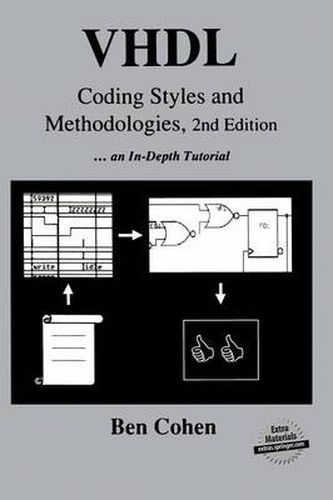Readings Newsletter
Become a Readings Member to make your shopping experience even easier.
Sign in or sign up for free!
You’re not far away from qualifying for FREE standard shipping within Australia
You’ve qualified for FREE standard shipping within Australia
The cart is loading…






This title is printed to order. This book may have been self-published. If so, we cannot guarantee the quality of the content. In the main most books will have gone through the editing process however some may not. We therefore suggest that you be aware of this before ordering this book. If in doubt check either the author or publisher’s details as we are unable to accept any returns unless they are faulty. Please contact us if you have any questions.
This text follows up the first edition of the same book and also VHDL Answers to Frequently Asked Questions , first and second editions. The book was originally written as a teaching tool for a VHDL training course. This new edition provides practical information on reusable software methodologies for the design of bus functional models for testbenches. It also provides guidelines in the use of VHDL for synthesis. All VHDL code described in the book is on a companion CD, which also includes the GNU toolsite with EMACS language-sensitive editor (with VHDL, Verilog, and other language templates), and TSHELL tools that emulate a Unix shell. Model Technology included an evaluation version of ModelSim, a recognized industry standard VHDL/Verilog compiler and simulator that supports easy viewing of the models under analysis, along with many debug features. The text is intended for professional engineers as well as students. It is organized in 13 chapters, each covering a separate aspect of the language, with complete examples. It provides a practical approach to learning VHDL. Combining methodologies and coding styles, along with VHDL rules, the text aims to lead the reader in the right direction from the beginning. Included is a CD that contains: all code included in the book; GNU EMACS language-sensitive editor with VHDL, Verilog, and templates for other languages; GNU TSHELL tools that emulate Unix shell; 30-day evaluation of ModelSim VHDL compiler/simulator from Model Technology; 20-day evaluation of Synplify VHDL/Verilog FPGA synthesizer from Synplicity; VHDL template demonstrating the language syntax; and VHDL ‘87 and HDL '93 formal syntax in HTML format.
$9.00 standard shipping within Australia
FREE standard shipping within Australia for orders over $100.00
Express & International shipping calculated at checkout
This title is printed to order. This book may have been self-published. If so, we cannot guarantee the quality of the content. In the main most books will have gone through the editing process however some may not. We therefore suggest that you be aware of this before ordering this book. If in doubt check either the author or publisher’s details as we are unable to accept any returns unless they are faulty. Please contact us if you have any questions.
This text follows up the first edition of the same book and also VHDL Answers to Frequently Asked Questions , first and second editions. The book was originally written as a teaching tool for a VHDL training course. This new edition provides practical information on reusable software methodologies for the design of bus functional models for testbenches. It also provides guidelines in the use of VHDL for synthesis. All VHDL code described in the book is on a companion CD, which also includes the GNU toolsite with EMACS language-sensitive editor (with VHDL, Verilog, and other language templates), and TSHELL tools that emulate a Unix shell. Model Technology included an evaluation version of ModelSim, a recognized industry standard VHDL/Verilog compiler and simulator that supports easy viewing of the models under analysis, along with many debug features. The text is intended for professional engineers as well as students. It is organized in 13 chapters, each covering a separate aspect of the language, with complete examples. It provides a practical approach to learning VHDL. Combining methodologies and coding styles, along with VHDL rules, the text aims to lead the reader in the right direction from the beginning. Included is a CD that contains: all code included in the book; GNU EMACS language-sensitive editor with VHDL, Verilog, and templates for other languages; GNU TSHELL tools that emulate Unix shell; 30-day evaluation of ModelSim VHDL compiler/simulator from Model Technology; 20-day evaluation of Synplify VHDL/Verilog FPGA synthesizer from Synplicity; VHDL template demonstrating the language syntax; and VHDL ‘87 and HDL '93 formal syntax in HTML format.